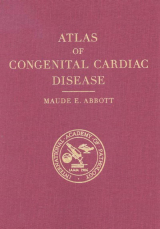


The current exhibit of these 39 specimens includes the following headings:
Specimen Card Nomenclature
The number assigned to the specimen and the information transcribed from the card label affixed to it in 1966.
International Classification of Diseases
The diagnostic term to describe the anomaly as proposed by the International Society for Nomenclature of Paediatric and Congenital Heart Disease and adopted in the 11th edition of the International Classification of Diseases.
Atlas Illustration
The image used by Abbott in Abbott’s 1936 Atlas (if present).
Donor
If known.
Date
If known.
Age
If known.
Description and Comment
A summary of the anatomical features of the specimen and the pathogenesis of their development as understood today.
From her appointment as Curator of the McGill Medical Museum in 1901 to the time of her death in 1940, Maude Abbott collected hundreds of specimens illustrating congenital cardiovascular disease. Most were probably used for medical student teaching, a few were described in published journals, and many were used to illustrate her 1936 Atlas of Congenital Cardiac Disease. After her death, Abbott’s collection was moved from the Strathcona Medical Building to the nearby Pathological Institute. In 1966, the 80 specimens that remained were put in a special display cabinet in a newly built wing of that building. In 2013, these were moved back to the Strathcona Building to the newly-constituted Maude Abbott Medical Museum where a selection of 39 of them was put on display once again.

The American Heart Association published Maude Abbott's Atlas of Congenital Cardiac Disease in 1936. The Atlas was an important contribution to the understanding of cardiac defects and helped provide the stimulus for rapid advances in the diagnostic, physiologic, and surgical aspects of congenital heart disease over the following decades.
The Atlas was re-issued in 1956, and a third printing in 2006 includes remastered color images of many of the specimens.